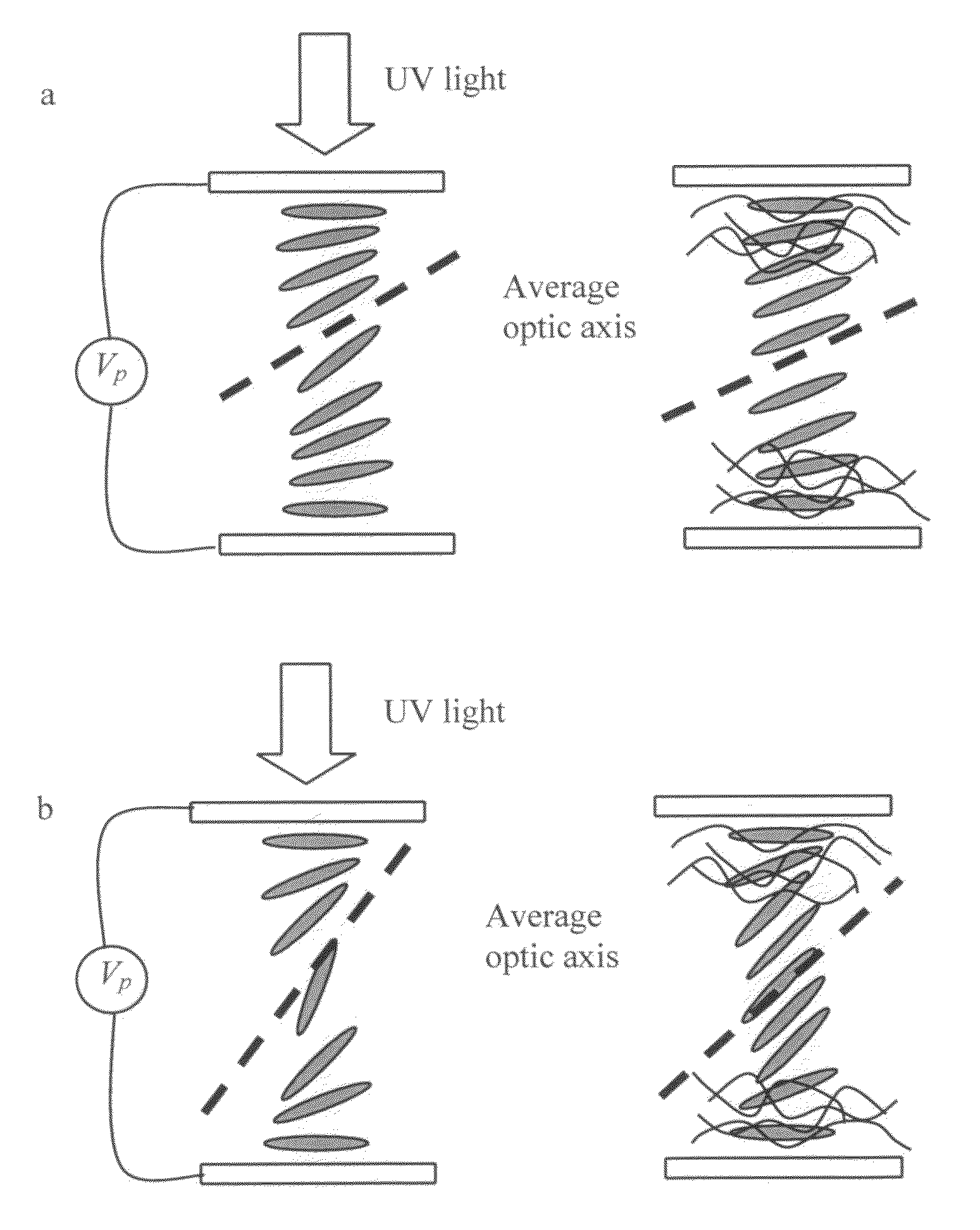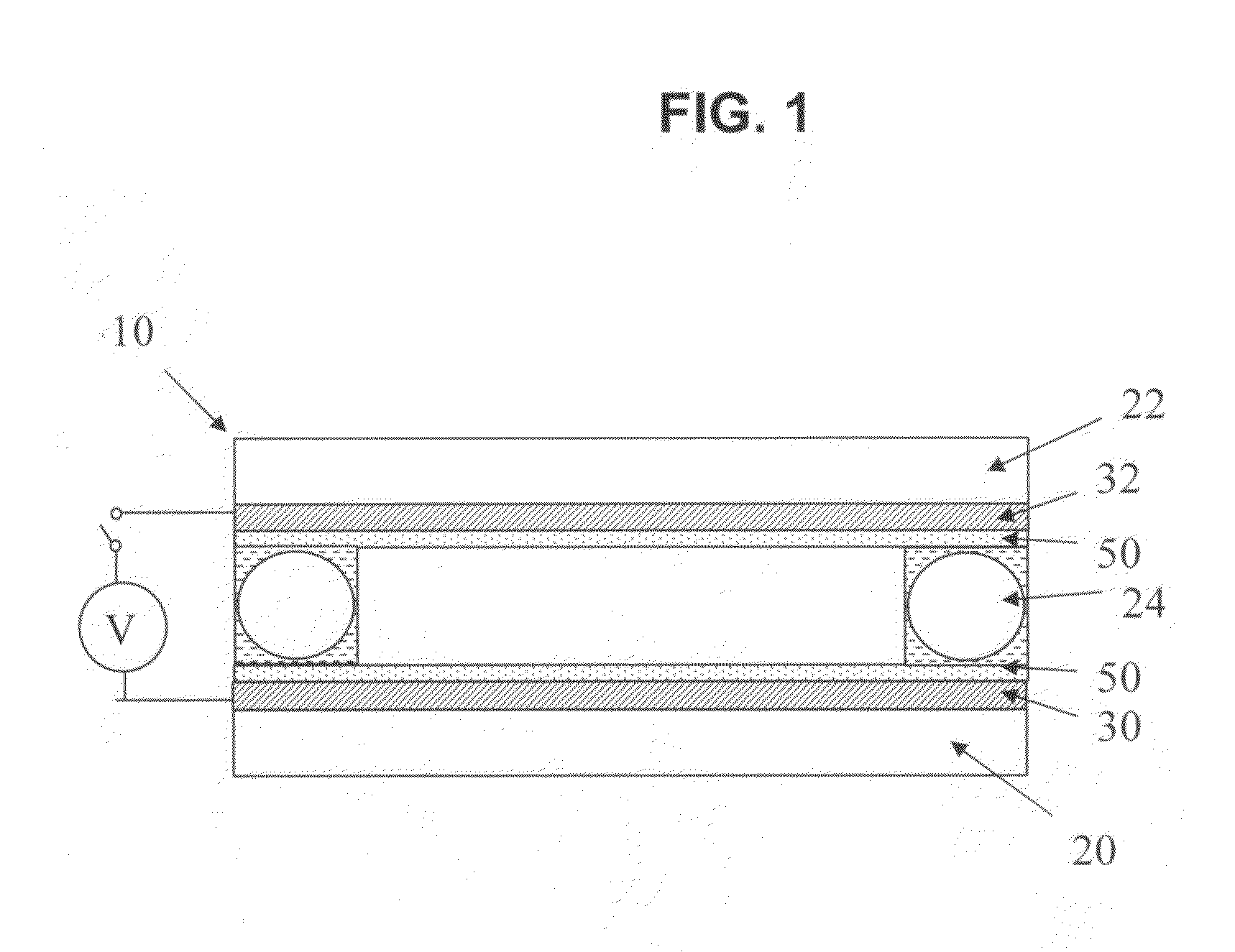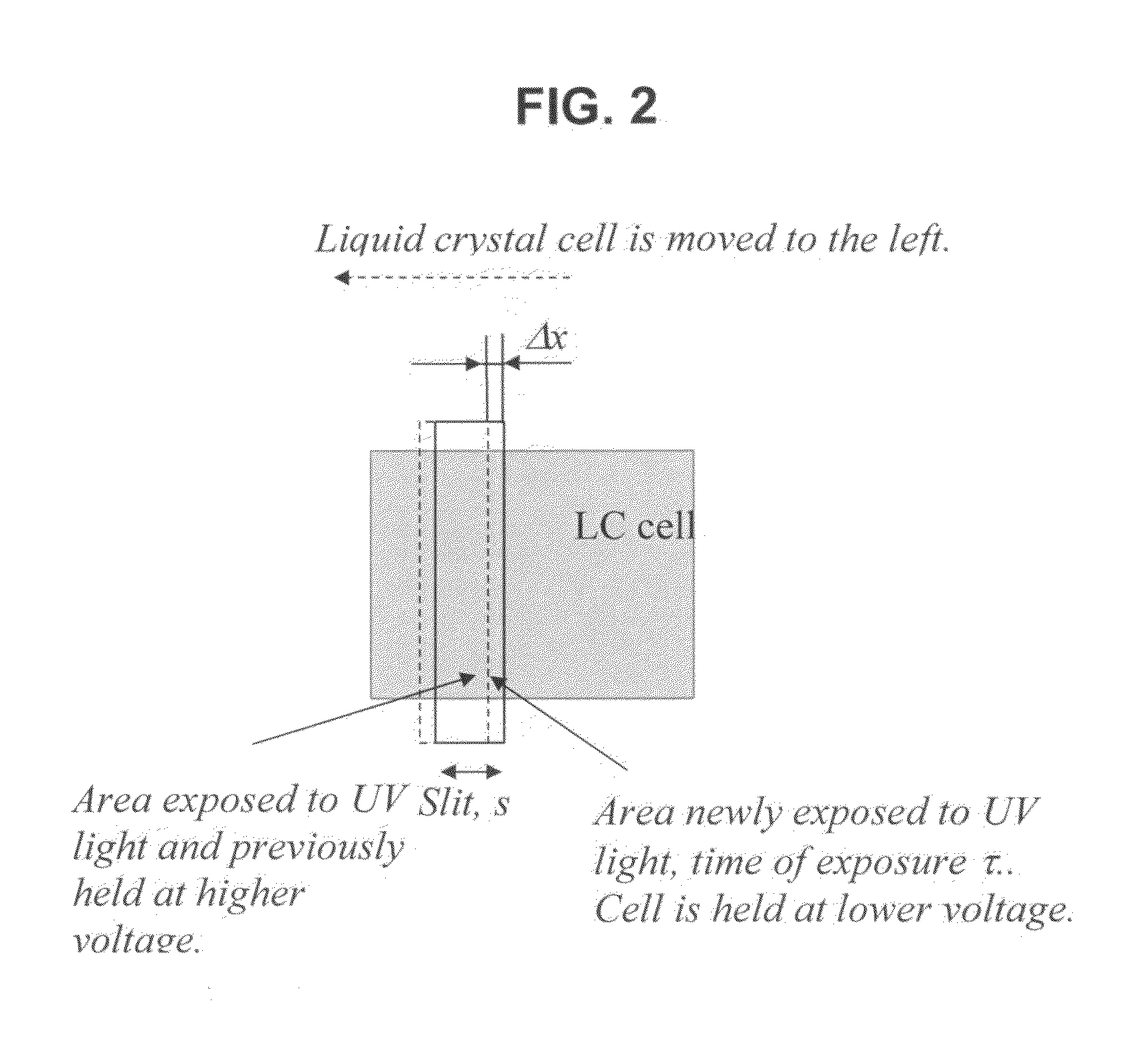Photo-patterned pre-tilt liquid crystal cells, lenses and methods
a liquid crystal cell, pre-tilt technology, applied in the direction of hollow non-inflatable balls, instruments, lamination ancillary operations, etc., can solve the problem of large and achieve the effect of reducing the number of lithographically etched transparent electrodes
- Summary
- Abstract
- Description
- Claims
- Application Information
AI Technical Summary
Benefits of technology
Problems solved by technology
Method used
Image
Examples
example 1
[0075]In this example, fabrication of uniform samples with a specified head-on optical retardation is shown, which is equivalent to increasing a pre-tilt angle. The liquid crystal cell is fabricated according to the cell fabrication procedure described. The cells have cell gaps of about d=20-21 μm. In this example, PI 2555 was used as an alignment layer. The cells were filled with a mixture of MLC 6080 (by EM Industries), about 0.5% BAB monomer and about 0.005% of Irgacure (by weight). The MLC 6080 material has the following characteristics:[0076]Refractive indices (at λ=589 nm): no=1.5076, ne=1.71, Δn=0.2024[0077]Dielectric constants: ∈parallel=11.1, ∈perpendicular=3.9, Δ∈=7.2.
The fluid demonstrated a pre-tilt angle of 2° on the polyimide alignment layer PI 2555 from DuPont.
[0078]The cells were irradiated with UV light from one cell side for about 30 minutes at the following power densities: 0.007 W / cm2 in UVA UVB (combined). AC voltage of 2, 10, 20, 30, 50, and 100 V rms of 200 Hz...
example 2
[0083]In this example, uniform samples with a specified pre-tilt angle were fabricated by building symmetric liquid crystal structures. This was achieved by illuminating the liquid crystal cells from two cell sides.
[0084]Liquid crystal cells were fabricated according to the procedure described earlier. The cells had a gap of d=20-21 μm and utilized KPI from IDW Company as an alignment layer. The cells were filled with mixtures of MLC 18349 from EM Industries, and 0.3, 0.5%, and 0.7% BAB monomer (by weight). The MLC 18349 has ne−no=Δn=0.26 and demonstrated a pre-tilt angle of about 3° on KPI. The cells were irradiated for about 20 minutes from two cell sides using two identical UV lamps facing each other, each having a UV power density of about 0.007 W / cm2 at each cell side. Irradiation from two cell sides was achieved by placing the UV lamps head-to-head on opposite cell sides. Resultant HOR, after the UV curing, was estimated according to the method described in Example 1. FIG. 9a-...
example 3
[0086]In this example, the director distribution was examined in the cells with anti-parallel rub (ECB cells) that had cell gaps of d=20.2±0.2 μm (measured when the cells were empty). The cells were filled with a mixture of MLC 6080 and 0.5% BAB monomer (by weight).[0087]MLC-6080[0088]Refractive indices (at λ=589 nm): no=1.5076, ne=1.71, Δn=0.2024[0089]Dielectric constants: ∈parallel=11.1, ∈perpendicular=3.9, Δ∈=7.2.[0090]Elastic constants: K11=14.4*10−12 J / m, K22=7.1*10−12 J / m, K33=19.1 / 10−12 J / m.[0091]Rotational viscosity: γ1=−α2=111 cp.[0092]The fluid demonstrates a pre-tilt angle of α=2-3.5° on the polyimide alignment layer PI 2555 (by Nissan Chemicals) (In modeling, α=3.5° was used).
[0093]The alignment layer used for fabrication of these cells was PI 2555 from DuPont. The cells were exposed to UV light by using two identical UV lamps (see description of the UV light source above). The cells were irradiated from two sides, with two light sources facing each other. Optical power ...
PUM
| Property | Measurement | Unit |
|---|---|---|
| Percent by mass | aaaaa | aaaaa |
| Weight | aaaaa | aaaaa |
| Angle | aaaaa | aaaaa |
Abstract
Description
Claims
Application Information
 Login to View More
Login to View More - R&D
- Intellectual Property
- Life Sciences
- Materials
- Tech Scout
- Unparalleled Data Quality
- Higher Quality Content
- 60% Fewer Hallucinations
Browse by: Latest US Patents, China's latest patents, Technical Efficacy Thesaurus, Application Domain, Technology Topic, Popular Technical Reports.
© 2025 PatSnap. All rights reserved.Legal|Privacy policy|Modern Slavery Act Transparency Statement|Sitemap|About US| Contact US: help@patsnap.com



